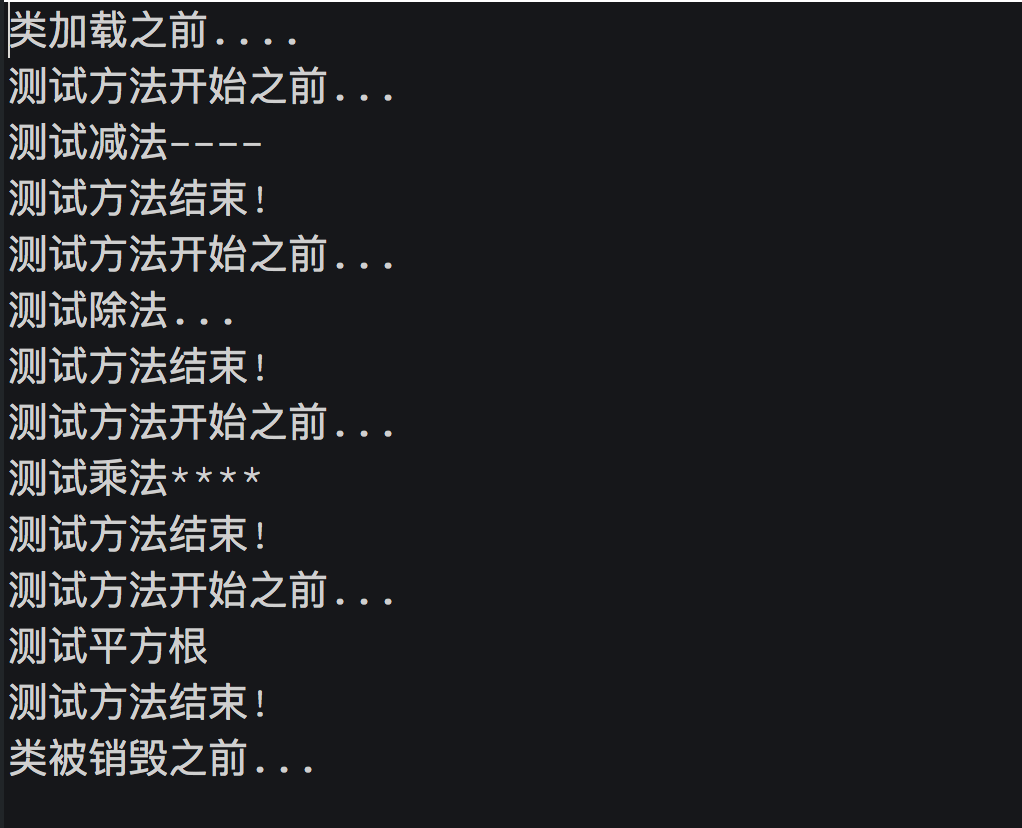1. JUnit4 测试示例
// Calculator.java
public class Calculator{
public int add(int a, int b){
return a + b;
}
public int minus(int a, int b){
return a - b;
}
public int square(int a, int b){
return a * b;
}
// Bug: 死循环
public void squareRoot(int a){
for(; ;)
;
}
public int multiply(int a, int b){
return a * b;
}
public int divide(int a, int b) throws Exception{
if(0 == b){
throw new ArithmeticException("除数不能为零!");
}
return a/b;
}
}
// 单元测试类
public class CalculatorTest{
private Calculator cal = new Calculator();
@BeforeClass
public static void before(){
System.out.println("类加载之前....");
}
@AfterClass
public static void after(){
System.out.println("类被销毁之前...");
}
// @BeforeClass和@AfterClass都需要被 static 修饰
@Before
public void setUp() throws Exception{
System.out.println("测试方法开始之前...");
}
@After
public void tearDown() throws Exception{
System.out.println("测试方法结束!");
}
@Test
@Ignore // 忽略测试
public void testAdd(){
int result = cal.add(1, 3);
System.out.println("测试加法++++");
Assert.assertEquals(4, result);
}
@Test
public void testMinus(){
int result = cal.minus(5, 2);
System.out.println("测试减法----");
Assert.assertEquals(3, result);
}
@Test
public void testMultiply(){
int result = cal.multiply(4, 2);
System.out.println("测试乘法****");
Assert.assertEquals(8, result);
}
// 超时测试, 单位毫秒
@Test(timeout = 1000)
public void testSquareRoot(){
System.out.println("测试平方根");
cal.squareRoot(4);
}
// 异常测试
@Test(expected = ArithmeticException)
public void testDivide() throws Exception{
System.out.println("测试除法...");
cal.divide(4, 0);
}
}

1.1 参数测试
- 需求:如果
SquareRoot()方法,需要使用不同的参数,测试多次,需要提供多个@Test方法; JUnit4创建不同参数测试只需要五个步骤:
创建一个不含参数的通用测试;
创建一个返回Collection类型的static feeder 方法, 并用@Parameters注释加以修饰;
为在步骤1中定义的通用方法所要求的参数类型创建类成员;
创建一个持有这些参数类型的构造函数,并把这些参数类型和步骤3中定义的类成员相应地联系起来;
通过@RunWith注释,指定测试用例和Parameterized类一起运行;
// 测试用例
参考资料: